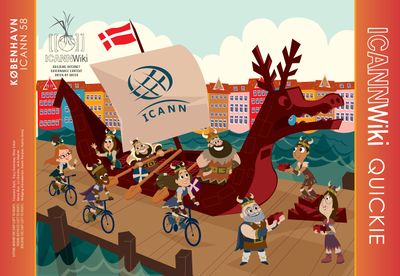Difference between revisions of "ICANN 58 Quick Guide"
| Line 23: | Line 23: | ||
<h1 class="sectionheader"><span style="padding:0 0 0 15px;font-size:2.5vw;">Gender Equity</span></h1> | <h1 class="sectionheader"><span style="padding:0 0 0 15px;font-size:2.5vw;">Gender Equity</span></h1> | ||
| − | With this | + | With this [[ICANNWiki Quickie]] marked the beginning of our research on [[Gender Issues in Tech & Internet Governance]]. Visit that page for infographics on the subject, as well as a collection of organizations and actions undertaken around the world to help solve the persistent problem of gender inequality in tech and governance. |
<h1 class="sectionheader"><span style="padding:0 0 0 15px;font-size:2.5vw;">Get Involved</span></h1> | <h1 class="sectionheader"><span style="padding:0 0 0 15px;font-size:2.5vw;">Get Involved</span></h1> | ||
Revision as of 21:05, 20 March 2017
As usual, we’ve primed this edition of the ICANNWiki Quickie to be a helpful aid to newcomers--which means an introduction on how to get involved in ICANN, a whole new slew of expanded and explained acronyms, a feature on gender equity in tech organizations as well as an exhibition of the numerous capacity building projects making the Internet a better place. We also built this Quickie to honor members of our community who weren’t able to make it to this meeting--which means crafting another creative mural. From cover to cover, we’ve lovingly crafted a comprehensive primer for newcomers. We hope you enjoy, and most importantly, learn something new and useful.
ICANN 58 - Quickie -- DOWNLOAD .PDF
The Gender Digital Divide (March 2017)
VIEW ALL INFOGRAPHICS
Gender Equity
With this ICANNWiki Quickie marked the beginning of our research on Gender Issues in Tech & Internet Governance. Visit that page for infographics on the subject, as well as a collection of organizations and actions undertaken around the world to help solve the persistent problem of gender inequality in tech and governance.
Get Involved
Three times a year, ICANN’s Multistakeholder Community gathers for meetings in different regions of the world. These meetings are free and open to all, including remote participants. With around thousands of participants, hundreds of sessions and various stakeholder groups, navigating ICANN as a newcomer can be difficult, but the ICANNWiki Primers are a helpful place to start your ICANN journey.
LEARN: Learn how ICANN is structured and operates by taking a course on ICANN Learn, researching with ICANNWiki’s multilingual encyclopedic resource, and exploring the vast amount of documents and information on icann.org.
FOLLOW: Follow the latest policy discussions by subscribing to some mailing lists or reading the archives. Many of the lists are publicly available, but some may be restricted to members of the Working Group.
BE HEARD: Comment on policy proposals through ICANN’s public comment platform. Each proposal is open for a minimum of 40 days for community comments. At ICANN Meetings, you can also make comments at the Public Forums.
Get Involved With One of ICANN's Structures
ICANN’s Multistakeholder Community consists of seven structures, classified as Supporting Organizations (SO) and Advisory Committees (AC). Each of the seven structures have different compositions and criteria to join. Newcomers looking for a way to contribute to ICANN’s multi-stakeholder, bottom-up, consensus driven model for policy development should start with the GNSO or ALAC.
Supporting Organizations
GNSO: The Generic Names Supporting Organization (GNSO) is the main policy-making body in ICANN. It brings together various stakeholder groups to develop and recommend policies to the ICANN Board concerning generic top-level domains (gTLDs). To learn more, visit gnso.icann.org
ccNSO: The Country Code Names Supporting Organization (ccNSO) is open to and comprised of the managers responsible for operating country-code top-level domains (ccTLDs). It develop and recommends policies relating to ccTLDs. To learn more visit ccnso.icann.org.
ASO: The Address Supporting Organization (ASO) represents the Regional Internet Registries (RIRs). It is tasked with reviewing and developing Internet Protocol address policy and advise the Board accordingly. ASO Membership is only available to RIRs. Learn more at aso.icann.org.
Advisory Committees
ALAC: The At Large Advisory Committee (ALAC) functions as the voice for the individual Internet user as it relates to ICANN processes, policy and more and advises the Board accordingly. It is formed of smaller groups At-Large Structures that are part of Regional At-Large Organizations To learn more, visit atlarge.icann.org.
SSAC: The Security and Stability Advisory Committee is composed of technical experts from industry and academia and advises the Board on the security and integrity of the Internet’s naming and address allocation systems. The SSAC is an invite-only organization, but you can learn more about their work at ssac.icann.org.
GAC: The Governmental Advisory Committee (GAC) iscomprised of formally appointed governmental representatives and is responsible for providing advice to the Board relating to the concerns of governments, including how ICANN policies interact with laws and international agreements. To learn more, visit gac.icann.org.
RSSAC: The Root Server System Advisory Committee is made up of representatives from the organization responsible for operating the 13 root name servers and advises the Board on issues related to the operation, administration, security, and integrity of the Internet’s Root Server. To learn more, visit rssac.icann.org.
Pick an Issue & Join a Working Group!
Find something that interests you, learn more about it and join a Working Group! Policy Development at ICANN addresses many important issues related to the DNS. The following topics are just a few suggestions. If none of these seem like the right fit, don’t worry! There are many more opportunities out there.
At-Large Review
The ICANN Bylaws require periodic review of ICANN’s Structure and Operations at a minimum of every five years. The second At-Large Review began in May 2016 and was carried out by ITEMS International.
Over the course of nine months, ITEMS conducted 100 face-to-face interviews, received 242 online survey responses, reviewed the At-Large website, including relevant documents and observed the At-Large meetings at ICANN56 and ICANN57. Using this analysis, they released a draft report, which was opened for Public Comment on 1 Feb 2017 and closes 24 March 2017. Based on the feedback from the community, ITEMS will make the appropriate updates and submit a final report.
The draft report proposed 16 recommendations to help improve the structure of the At-Large community and the efficiency in fulfilling its mission. The recommendations included finding ways to empower the end users through a few changes to the leadership structure, introducing an Empowered Membership Model, and more.
If you are interested in learning more or providing input at ICANN58, the review will be discussed at several workshops, including the following:
ALAC AND REGIONAL LEADERS - WORKING SESSION PART 6 Sunday, 12 March - 11:00-12:45 - Hall C1.3
AT-LARGE REVIEW WORKING PARTY Tuesday, 14 March - 11:00-12:45 - Hall C1.3
AT-LARGE REVIEW: WORKSHOP WITH INDEPENDENT EXAMINER (ITEMS) Wednesday, 15 March - 15:15-16:45 - Hall A3
(Dates and times of workshops are subject to change. Please check the ICANN conference schedule prior to attending any workshop.)
Next-Generation Registration Directory to Replace WHOIS
WHOIS was developed in the early 1980s as a directory of contact information for anyone using the ARPANET. It collects registration data on all gTLDs, including the registrant’s name, address, phone number, email address, etc.
As the Internet became a global, commercial resource,the uses and purpose of WHOIS changed, but the protocol and data required by registrants remained mostly unchanged. Consequently, it has been a long-standing source of discussion and debate in the ICANN Community and despite nearly 15 years of work in the GNSO, comprehensive reform has yet to happen, despite the continuous discussions on things like purpose, accuracy, access, privacy and data protection, law enforcement, malicious use and abuse, and more.
In 2012, the WHOIS Policy Review Team’s released its final report that outlined a set of recommendations to ensure that WHOIS policy is effective, meets the legitimate needs of law enforcement and promotes consumer trust. Shortly after the final report, the SSAC issued a response that stressed the importance of “understanding the purpose of domain name registration data” before any meaningful, comprehensive solution can be reached. In response the ICANN Board resolved to take a two-pronged approach of:
(1) enhancing existing policies; (2) reexamining the purpose of domain name registration data and considering safeguards for that data.
On Track 1, much of the work has been completed, although several issues of implementation are outstanding. On Track 2, the process is in its early stages. In April 2015, the ICANN Board requested a Board-initiated GNSO Policy Development Process (PDP) to define the purpose of the collection, maintenance and access to gTLD registration data, as well as consider safeguards for protecting this data. The PDP Working Group (PDP WG) identified a preliminary list of possible requirements for gTLD registration directory services (RDS) in order to inform the discussion on the following two questions:
(1) What are the fundamental requirements for gTLD registration data and directory services? (2) Is a new policy framework and next-generation RDS needed to address these requirements?
After deliberating over several of the possible requirements, the WG decided it would be more effective to begin discussion with sub-questions relating to the topics of User/Purposes, Data Elements, and Privacy. Deliberations on these sub questions will seek to identify and reach a rough consensus on the possible requirements for RDS and key concepts.
In these deliberations, important issues are currently being discussed, such as “Should gTLD registration thin data be accessible for any purpose or only for specific purposes?” and other questions that will affect every gTLD registrant.
If you are interested in contributing, check out the two-part workshop:
GNSO REGISTRATION DIRECTORY SERVICES (RDS) POLICY DEVELOPMENT PROCESS WORKING GROUP MEETING
Saturday, 11 March 2017 - 13:45-16:45 in Hall C1.4 (GNSO)
Wednesday, 15 March 2017 - 13:45-15:00 in Hall C1.4 (GNSO)
Or contact the GNSO Secretariat at gnso-secs@icann.org.
Subsequent Procedures for New gTLDs
ICANN launched its New generic Top-Level Domain (New gTLD) Program in 2012, accepting 1,930 applications for new gTLDs and delegating the first new gTLDs on 22 March 2013. Since this time, the DNS root zone has grown from 22 gTLDs to over 1,000, including community, geographical and internationalized domain names.
While there have been over 1,000 new gTLDs successfully delegated to the Root Zone under this program, there are undoubtedly ways in which it could be improved for future application rounds for New gTLDs. Out of this reality, the GNSO spawned the PDP on New Generic Top-Level Domain (gTLD) Subsequent Procedures in December 2015 and
the working group (WG) was officially chartered in January 2016. Its purpose is to review and analyze existing policy recommendations outlined in the 2007 Final Report on the Introduction of New Generic Top-Level Domains to determine if any changes need to be made. The WG established the following three drafting teams to focus on delivering proposals relating to the overarching issues:
- Predictability/Community Engagement
- Applications Assessed in Rounds
- Different TLD Types
They also established four working tracks to cover the remaining issues in the charter:
- Work Track 1: Overall Process/Support/Outreach Issues
- Work Track 2: Legal / Regulatory Issues
- Work Track 3: String Contention/Objections & Disputes
- Work Track 4: Internationalized Domain Names/Technical & Operations
These relatively broad subjects are packed with issues of importance for future New gTLD rounds and the future evolution of and innovation in the DNS.
If you are interested in getting involved with this process, check out the following workshops:
GNSO NEW GTLD SUBSEQUENT PROCEDURES POLICY DEVELOPMENT PROCESS WORKING GROUP MEETING
Saturday, 11 March 2017
8:30am-11:45am in Hall B4.2 (GNSO)
GNSO NEW GTLD SUBSEQUENT PROCEDURES PDP WORKING GROUP COMMUNITY DIALOGUE
Wednesday, 15 March 2017
17:00-18:30 in Hall C1.4 (GNSO)
Contact the GNSO Secretariat at gnso-secs@icann.org.



